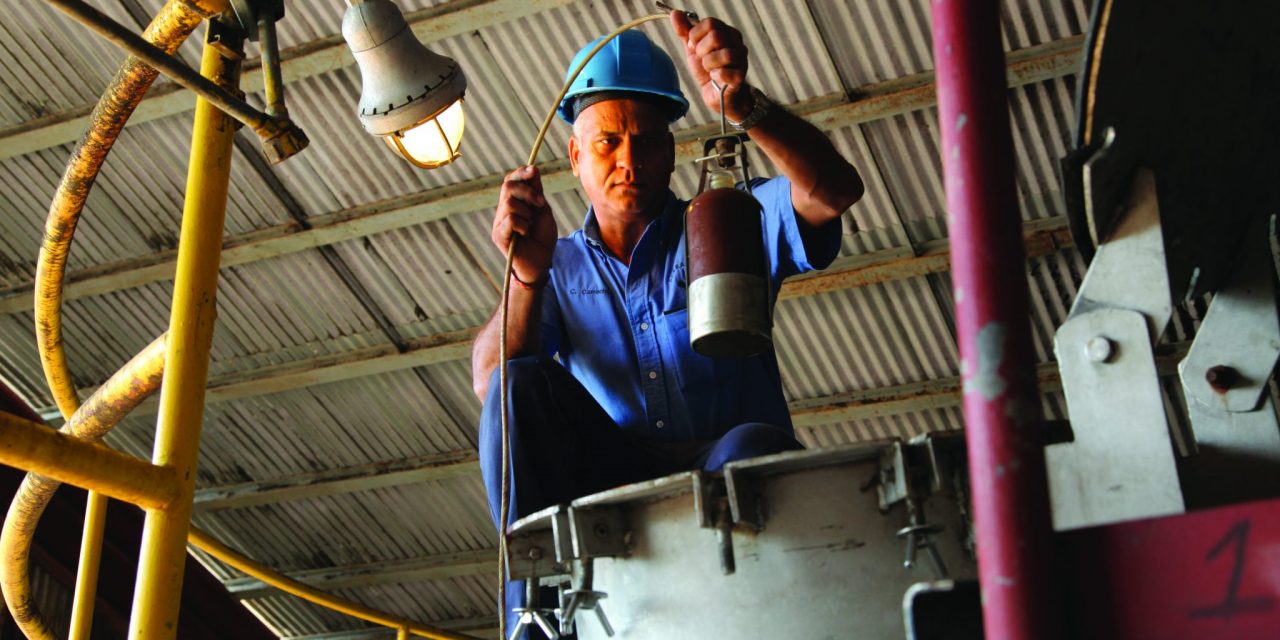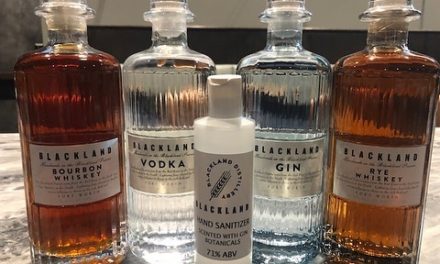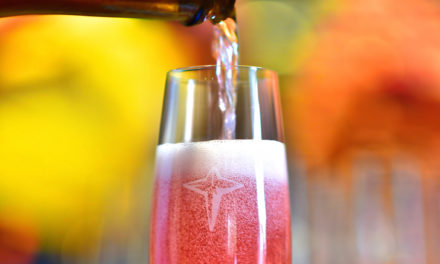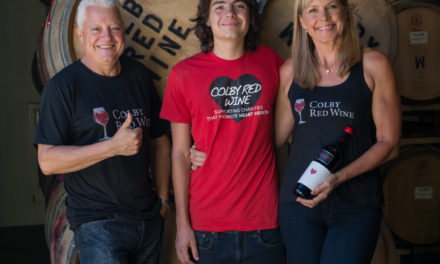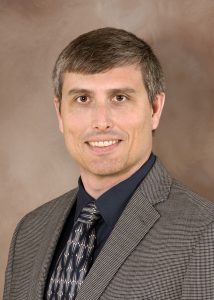
“Brown-Forman reuses every possible drop of available water. We go after very specific efficiencies in the vineyards themselves.” —Andy Battjes, Brown-Forman
Today’s alcohol producers are using many methods to reduce pollution caused by wastewater, including cleaning wastewater in different ways and reusing cleaned wastewater in nonproduction capacities. Treating water as a limited resource fosters goodwill with customers and local governments.
“Water is an entirely local issue,” says Andy Battjes, director of environmental health and safety at Louisville, Ky.-based Brown-Forman (one of America’s largest beverage companies with more than 25 brands in its portfolio, including Jack Daniel’s, Canadian Mist, and Chambord). “We have to have reliable, clean sources of water for our own use and for the communities in which we live.”
Battjes says Brown-Forman’s goal is to use water resources responsibly, which includes producing as little wastewater as possible. At the company’s California winery operations at Sonoma-Cutrer, Brown-Forman “reuses every possible drop of available water. We go after very specific efficiencies in the vineyards themselves,” says Battjes. “[For example], we use drip irrigation rather than spray, and other industry best practices, such as using data on soil and vine moisture to control when we irrigate.”
Cleaning Techniques
The amount of wastewater generated is dependent on the type of alcohol produced, harvest size, production practices, products standards, and age and efficiency of processing equipment. The three main ways water becomes polluted include water getting mixed with organic material generated from alcohol production, such as bits of distilled fruit or grain. Water can also be polluted through the cleaning process; distillation concentrates naturally occurring heavy metals, like copper, in plants and water, and when metal equipment or a metal floor is washed, the wastewater created contains heavy metals. Finally, processes like making and cooling alcohol add nutrients such as nitrogen, phosphorous, and potassium to wastewater. Water with a high amount of such nutrients can cause harmful algae blooms if released into the environment.
According to Hollis Hughes, owner of Aquatic BioScience, a Fort Bragg, Calif.-based wastewater treatment company, the primary culprit when it comes to polluted—or high BOD (biological oxygen demand)—wastewater resulting from processing fruits and grains into alcohol is the organic material itself, which requires remediation prior to use in a secondary application (such as irrigation).
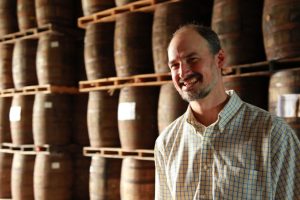
“After the water has been cleaned, we use it to irrigate about 400 acres near the distillery. Not a single drop of our wastewater ends up in the ocean.” —Roberto Serralles, Destilería Serralles
Roberto Serralles, board member and vice president of Puerto Rico-based Destilería Serralles, which produces Don Q rum, says his business shows its commitment to green practices through wastewater treatment and reuse.
“We have a zero discharge type permit. This is significant because when we use water, 12 percent of it becomes rum; the other 88 percent becomes wastewater,” he says.
Destilería Serralles cleans its water through two processes: anaerobic digestion, which uses specific bacteria to break down organic matter; and aerobic digestion, which diffuses water with high volumes of air. “After the water has been cleaned, we use it to irrigate about 400 acres near the distillery. We own the land and grow hay on it. Not a single drop of our wastewater ends up in the ocean,” says Serralles.

Starrlight Mead in Pittsboro, N.C., produces less than 100 gallons of wastewater per year in the production of mead.
A matter of volume
Wastewater treatment tends to be less of a challenge for smaller producers. Starrlight Mead in Pittsboro, N.C., produces less than 100 gallons of wastewater per year in the production of mead. Since the meadery doesn’t use caustic chemicals in its alcohol production, it can send wastewater to its municipal water treatment facility.
“[Our wastewater] goes down the drain,” says co-owner Becky Starr.
By contrast, large wineries and breweries typically have their own wastewater treatment plants/ponds for processing purposes. Most wineries in California’s Napa and Sonoma counties use facultative treatment ponds with capacities ranging from 1 million to 8 million gallons.
“Wastewater generated by wineries is typically too polluted [high in BOD] for a municipal wastewater treatment plant, so the winery must treat it onsite prior to releasing the water into a sewer, river, or even using it for irrigation,” says Hughes. “The high-BOD water, if released into a river, would suck up all the oxygen and effectively kill every living thing in the waterway. As a part of cleaning the wastewater for re-use, we sell a biological product [ABS-WP] consists of enzyme-producing bacteria to speed the overall process time and increase overall treatment system efficiency.”
Maintaining treatment ponds and systems requires careful control and observation, adds Hughes: “To create the optimal environment for the BOD-eating bacteria to grow, the pH must be monitored, aeration must be adequate, and water temperature maintained above 60°F degrees.”
Alcohol producers typically hire Aquatic BioScience to multiply bacteria to a very high concentration and introduce them to a pond. Customers are responsible for treating their own ponds and systems with ABS products, but the company provides instruction and even onsite assistance until there’s full understanding.
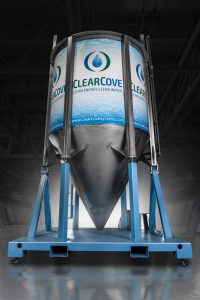
ClearCove’s Clear Capture system can process about 60,000 gallons of wastewater daily. [Photo courtesy ClearCove]
New ideas for wastewater treatment are always evolving. Clear Cove Systems, a wastewater treatment company based in Victor, N.Y., has developed a unique process that uses no biology. Instead, the company uses a patented process that uses physics and small amounts of chemistry to let physical membranes and other secondary treatment processes treat wastewater.
“It uses high-velocity mixing, quiet settling, and a flow-through screening process,” says company President/COO Gary Miller. “When you let solids settle, you get most of the solid waste and insoluble contaminants out of wastewater. Ultimately, you end up with potable water for reuse and high strength fuel that can be used to create energy. We do this in a very small amount of space for a low amount of capital.” He explains Clear Cove’s system uses about as much energy as a light bulb left on 24 hours per day.
“A customer ends up with about 95 percent of the water cleaned and recovered for reuse, and the system also can be put into sleep mode,” says Miller.
Clear Cove’s equipment for a single system includes a stainless steel tank that takes up about 100 square feet of space and processes about 60,000 gallons of wastewater per day. While the system works for multiple industries, Clear Cove is focused on creating treatment systems for food and beverage providers such as breweries, distilleries, and dairy processers.
“We cut our teeth on creating a system for Genesee Brewery in Rochester, New York,” says Miller. “Our first four sales were to breweries—primarily microbreweries—and our very first sale was to a winery that put in a microbrewery.”

According to engineer Dan Scott, ADI Systems has built about 20 wastewater treatment and waste-to-energy projects for alcohol beverage-producing facilities around the world.
Brewers First
Dan Scott, an engineer for ADI Systems, an international company with its U.S. base in Denver, Colo., indicates the demand for custom-made wastewater treatment systems is steady. According to Scott, ADI Systems has built about 20 wastewater treatment and waste-to-energy projects for alcohol beverage-producing facilities around the world. One-third of these are in the United States.
“[These range] in size from well-established craft breweries to flagship plants of major brands. The combined design flow for these systems is more than 10 million gallons of wastewater per day,” says Scott.
Scott says anaerobic treatment tends to be more popular because it’s less costly and allows recovery of energy in the form of biogas. But every customer has different priorities, which makes it difficult to generalize about the efficacy and price for treatment.
“Some need to meet very tight nutrient discharge limits, while some have to fit onto tight sites on historic properties. Each system is custom-designed,” says Scott.
Drink Up
It’s unlikely an alcohol producer will ever reuse wastewater generated during distillation to create a beverage. But in March 2017, San Diego, Calif.-based Stone Brewing produced Stone Full Circle Pale Ale, made with recycled and highly purified water from the city of San Diego’s Pure Water program (previously used in residential kitchens and bathrooms).
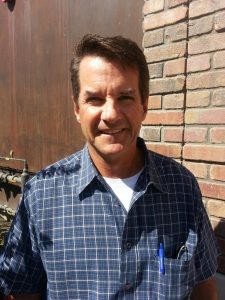
“Our recycling accounts for 25 percent of the water we use.” —Tim Suydam, Stone Brewing
“The program takes wastewater from the city’s treatment plant, which produces highly purified water using five or six advanced treatment processes. We had to get approval from state regulators for us to use it for brewing. We brewed five-and-a-half kegs of beer for the Pure Water event,” says Tim Suydam, Stone Brewing’s senior water operations manager.
Suydam says Stone Brewing only reuses its own wastewater in cooling towers, boilers, and cleaning. “We use membrane bioreactor technology, first purifying the water and then treating it with reverse osmosis. We put some salt back in it and add chlorine so bacteria won’t grow.
“Our recycling accounts for 25 percent of the water we use—but it never goes back into the beer.”
It takes time to select the right wastewater treatment methods to produce clean water for reuse. Brown-Forman’s Battjes says, as alcohol producers move toward that goal, they can remain in good standing by listening to communities’ conversations about drought and other local water issues: “It helps everyone to make sure companies are using water appropriately and not contributing to problems with water availability.”

